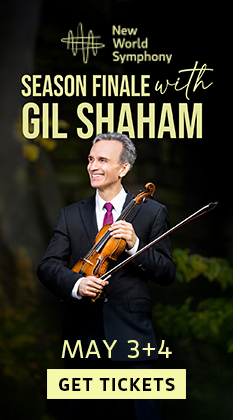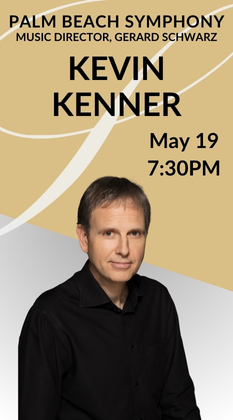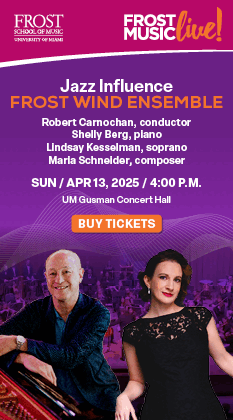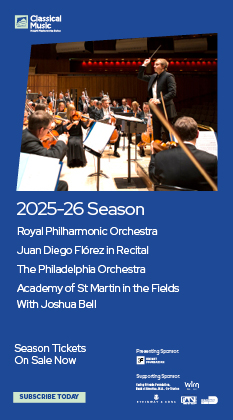Denève leads New World players in a Mozart wind masterpiece
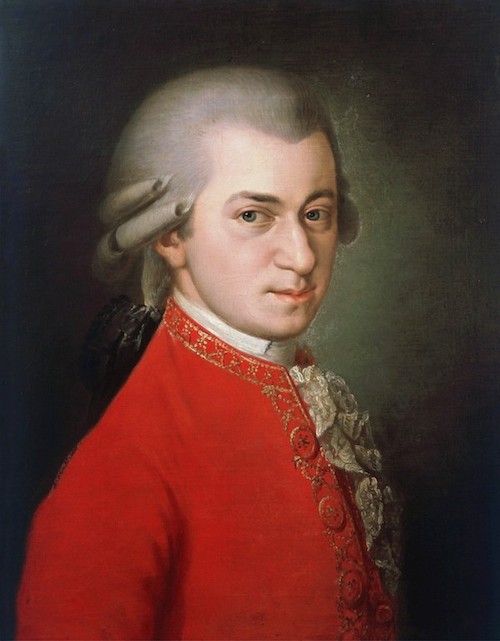
Mozart’s “Grand Partita” Wind Serenade was performed by New World Symphony musicians Sunday in Miami Beach.
Wind band concert repertoire is largely a product of the 20th century but Mozart and Beethoven were creating wind ensemble scores as entertainment for celebratory occasions during the 18th and 19th centuries. In 1781, Mozart penned the Serenade No. 10 in B-flat Major (“Gran Partita”), the first masterpiece for wind players.
At the New World Symphony’s first chamber music program of the season on Sunday afternoon at the New World Center, artistic director Stéphane Denève conducted members and alumni of the orchestral academy in this too infrequently heard gem.
After a stately introduction, the Allegro molto (first movement) sparkled at a brisk tempo. Although Denève is well known as an interpreter of romantic music and contemporary scores, he is splendidly attuned to the classical era (as his 2019 New World reading of Haydn’s Sinfonia Concertante aptly demonstrated). Keeping tight control throughout the serenade’s seven movements, he never allowed the score to become episodic or fragmented. Bolstered by two former New World members (clarinetist Brad Whitfield and hornist Alexander Kienle), the players rose impressively to the score’s demands. The corporate sound was always rounded yet with precise and expressive articulation.
Benjamin Cruz and Alex Abreu skillfully handled the two basset horns, providing a darker tonal support to the instrumental forces. Denève astutely differentiated the two minuet movements. The first emerged broadly shaped with a sprightly contrasting trio that radiated musical charm. The second was played with great spirit and energy and a quirky lilt in the trio section.
The Adagio brings one of Mozart’s most sublimely beautiful melodies which was played with unhurried grace by oboists Sooyoung Kim and Katherine Bruns. Denève infused life into the central dramatic episode that disrupts the tranquility of the Romanze and the ensuing Theme and Variations flowed naturally. A final Rondo-Allegro molto danced at a rapid clip, bringing a stylish and well executed traversal to a joyful close.
Throughout the performance, Denève’s balancing of instrumental timbres was uncommonly skillful. The double bass is the only string instrument in Mozart’s scoring but Matthew Peralta melded seamlessly into the ensemble. Clarinetist Juliana Darby and the solid horn quartet of Kienle, Abigail Black, Taryn Lee and Henry Bonds provided exceptional contributions to the performance.
Denève applauded and shook hands with each of the players and virtually the entire audience rose to its feet at the last chord. It was wonderful to experience the group’s new director taking part in these chamber programs and one hopes he will continue to appear and lead works from the small ensemble repertoire that benefit from the presence of a conductor.
The Mozart was preceded by Olly Wilson’s A City Called Heaven on the program’s first half. On last week’s orchestral program, Wilson’s Shango Memory proved an appealing, jazzy opener. Sunday’s three-movement Wilson opus runs out of inspirations half way through its twenty-minute length.
The first section begins promisingly, with jagged lines and suggestions of modern jazz and pianist Shih-Man Weng captured Wilson’s mixture of classical modernism and stride. The spiritual from which the work takes its title was stated resonantly by the three string players who tend to be lost in the aural velocity of the outer movements. The empty gestures and jumbled percussive volleys of the final section quickly become wearying, and the work seems poorly thought out. Conducting fellow Molly Turner handled Wilson’s changing meters expertly and the eight players made the best case for the piece.
The concert opened with Enescu’s Quartet No. 2 for piano and strings. Best known for his two Romanian rhapsodies, which are staples of the pops concert literature, Enescu was a composer of substantial major scores that deserve greater recognition outside his native country. Dedicated to Gabriel Fauré, who was one of Enescu’s teachers, the wartime piano quartet (1941-43) is a moody, brooding creation. The initial Allegretto moderato establishes the restrained passion that permeates the score. Enescu’s Gallic influences are evident in the chanson-like Andante. The finale becomes more animated and intense, the dark overtones of the opening returning for a pessimistic conclusion reflective of the work’s era.
New World alum Kuang-Hao Huang totally commanded the prominent keyboard part. Now a faculty member at Chicago’s Roosevelt University and Concordia University, Huang swerved from soft lyricism to fleet and agile dexterity, with a wide dynamic range. In the concluding Allegro agitato, he thundered to grand effect.
The three string players formed a balanced, well-proportioned entity that melded well with Huang. Mario Rivera’s viola excelled in solo moments and violinist Shomya Mitra and cellist Christopher Chan contributed to a well honed reading, playing with gutsy abandon in the final pages.
Stéphane Denève conducts the New World Symphony in James Lee III’s Visions of Cahokia, excerpts from Prokofiev’s Romeo and Juliet and Peter Lieberson’s Neruda Songs with mezzo-soprano Kelley O’Connor. 7:30 p.m. October 14 and 2 p.m. October 15 at the New World Center in Miami Beach. nws.edu
Posted in Performances
Leave a Comment
Mon Oct 9, 2023
at 12:35 pm
No Comments
